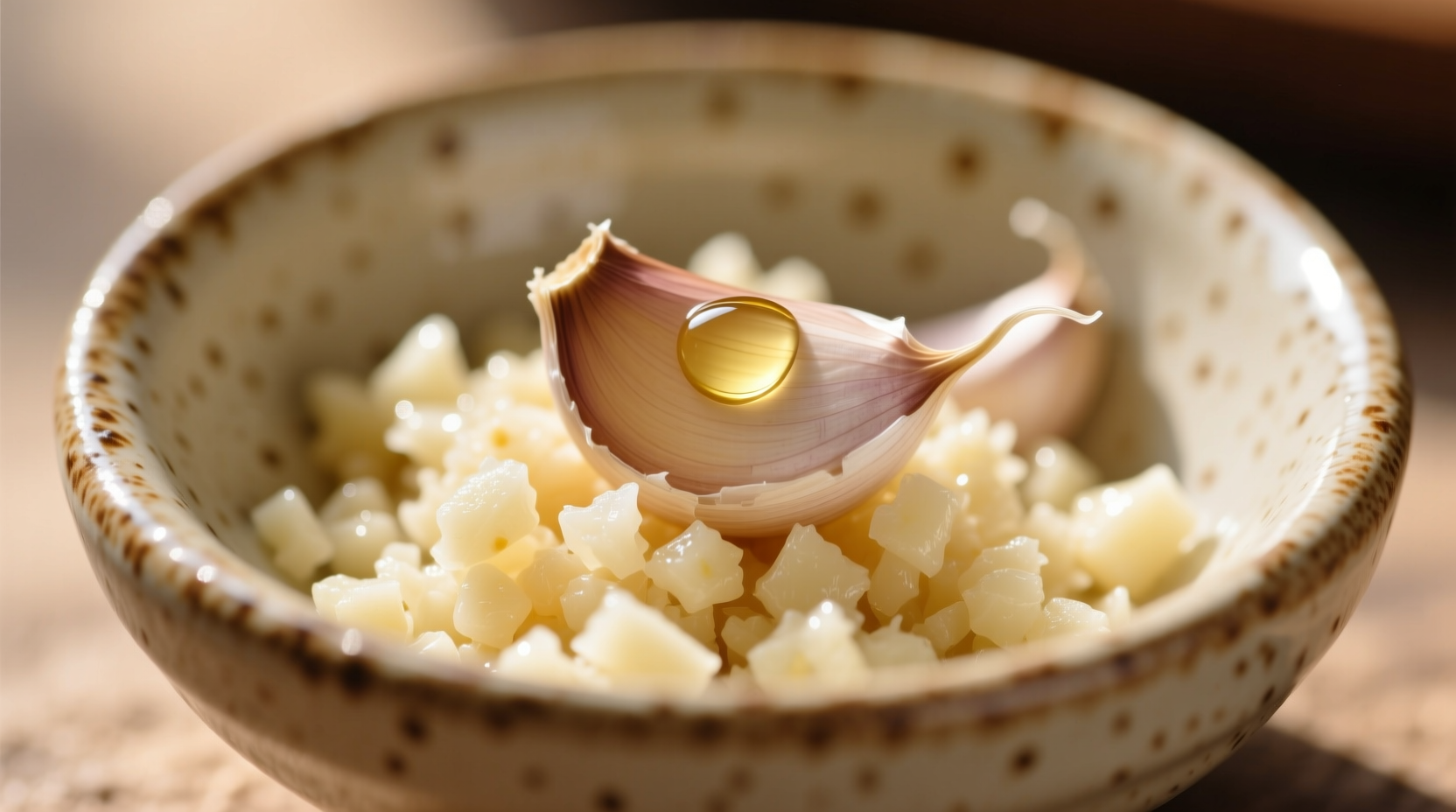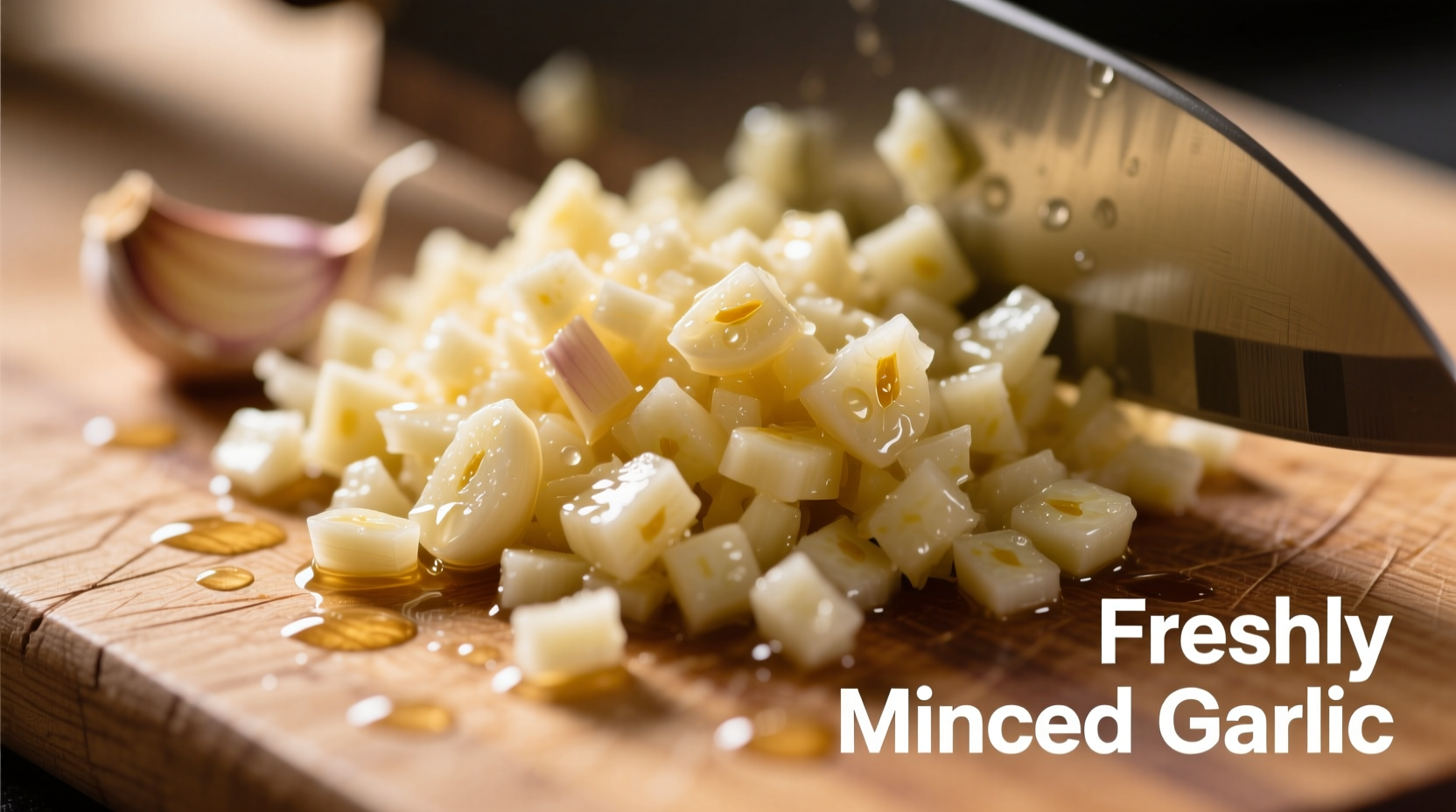What Exactly Is Minced Garlic and Why It Matters
Minced garlic refers to garlic cloves that have been finely chopped into uniform, tiny pieces—typically 1-2 millimeters in size. Unlike crushed garlic (which releases more intense flavor through cell rupture) or sliced garlic (which provides milder, gradual flavor release), mincing creates the optimal balance of flavor intensity and even distribution throughout dishes.
When you mince garlic, you're triggering a biochemical reaction. As research published in Molecules journal explains, cutting garlic activates the enzyme alliinase, which converts alliin to allicin. This compound not only creates garlic's characteristic aroma but also provides most of its celebrated health benefits. The finer the mince, the more surface area exposed, and the greater the allicin production—up to a point. Over-mincing can actually diminish flavor quality by causing rapid oxidation.

Minced Garlic vs. Other Preparation Methods: A Practical Comparison
| Preparation Method | Flavor Intensity | Best For | Shelf Life (Refrigerated) |
|---|---|---|---|
| Minced | Moderate to strong | Sauces, dressings, marinades | 3-5 days |
| Crushed | Very strong | Garlic bread, roasted dishes | 1-2 days |
| Sliced | Mild | Stir-fries, soups | 7-10 days |
| Pre-minced (jarred) | Mild to moderate | Quick meals, emergency use | 18-24 months (unopened) |
When Minced Garlic Outperforms Other Forms
Professional chefs consistently choose minced garlic for specific applications where flavor distribution matters most. According to FDA food safety guidelines, minced garlic works best in:
- Emulsified sauces like aioli or vinaigrettes where uniform flavor distribution is critical
- Marinades that need to penetrate meat fibers evenly
- Quick-cooking dishes where there's limited time for flavor development
- Cold preparations like salad dressings where raw garlic flavor shines
For Mediterranean and Middle Eastern cuisines, minced garlic forms the flavor foundation of countless dishes—from toum (Lebanese garlic sauce) to Italian aglio e olio. The uniform particle size ensures consistent flavor in every bite, which is why professional kitchens rely on proper mincing techniques rather than pre-minced alternatives.
Maximizing Flavor: The Science-Backed Mincing Method
Follow this chef-recommended process for optimal flavor development:
- Peel cloves and remove any green sprouts (which cause bitterness)
- Place flat side of chef's knife on garlic clove and press firmly to crush
- Let sit for 10-15 seconds to initiate enzymatic reaction
- Mince using a rocking motion with chef's knife
- Wait 60 seconds before cooking to maximize allicin formation
This method, validated by USDA food safety research, creates the ideal balance between flavor development and preservation. The brief resting period after crushing but before mincing allows initial enzyme activation without the rapid degradation that occurs with immediate fine mincing.
Storage Guidelines You Can Trust
Proper storage dramatically affects both flavor preservation and food safety. Here's what the evidence shows:
- Fresh minced garlic: Store in airtight container in refrigerator for 3-5 days maximum
- With oil: Never store fresh minced garlic in oil at room temperature—this creates botulism risk. Refrigerated versions last only 24 hours
- Freezing: Portion into ice cube trays with oil or water, then transfer to freezer bags (lasts 6 months)
- Pre-minced (jarred): Once opened, use within 14 days and keep refrigerated
The CDC's food safety guidelines specifically warn against storing garlic in oil at room temperature due to the risk of Clostridium botulinum growth. This anaerobic environment allows the bacteria to produce toxin even when refrigerated for extended periods.
Common Mistakes That Ruin Minced Garlic's Potential
Even experienced cooks make these critical errors:
- Over-mincing with food processors: Creates uneven texture and heats the garlic, causing bitterness
- Adding too early in cooking: Burns easily, creating acrid flavors (add during last 2-3 minutes for sautés)
- Using pre-minced as direct substitute: Jarred versions contain preservatives that alter flavor chemistry
- Storing in non-airtight containers: Causes rapid oxidation and flavor degradation
When Pre-Minced Garlic Makes Sense (And When It Doesn't)
While fresh minced garlic delivers superior flavor, pre-minced options have legitimate uses:
- Worth using: Quick weeknight meals, emergency cooking, when precise measurement matters more than peak flavor
- Avoid when: Making garlic-forward dishes (like aioli), cooking for guests, or when health benefits are primary concern
Studies from the USDA National Nutrient Database show that jarred minced garlic loses up to 30% of its allicin potential within weeks of processing, while fresh minced garlic reaches peak allicin levels after 60 seconds of preparation.
Professional Tips for Elevating Your Garlic Game
Master these techniques to transform ordinary dishes:
- Flavor layering: Combine minced garlic with whole cloves in long-simmered dishes for complex flavor profile
- Temperature control: Cook minced garlic in cool oil, gradually increasing heat to prevent burning
- Acid balancing: Add lemon juice or vinegar after cooking to mellow sharpness without losing flavor
- Freeze in portions: Mix minced garlic with oil in ice cube trays for ready-to-use cooking portions











 浙公网安备
33010002000092号
浙公网安备
33010002000092号 浙B2-20120091-4
浙B2-20120091-4